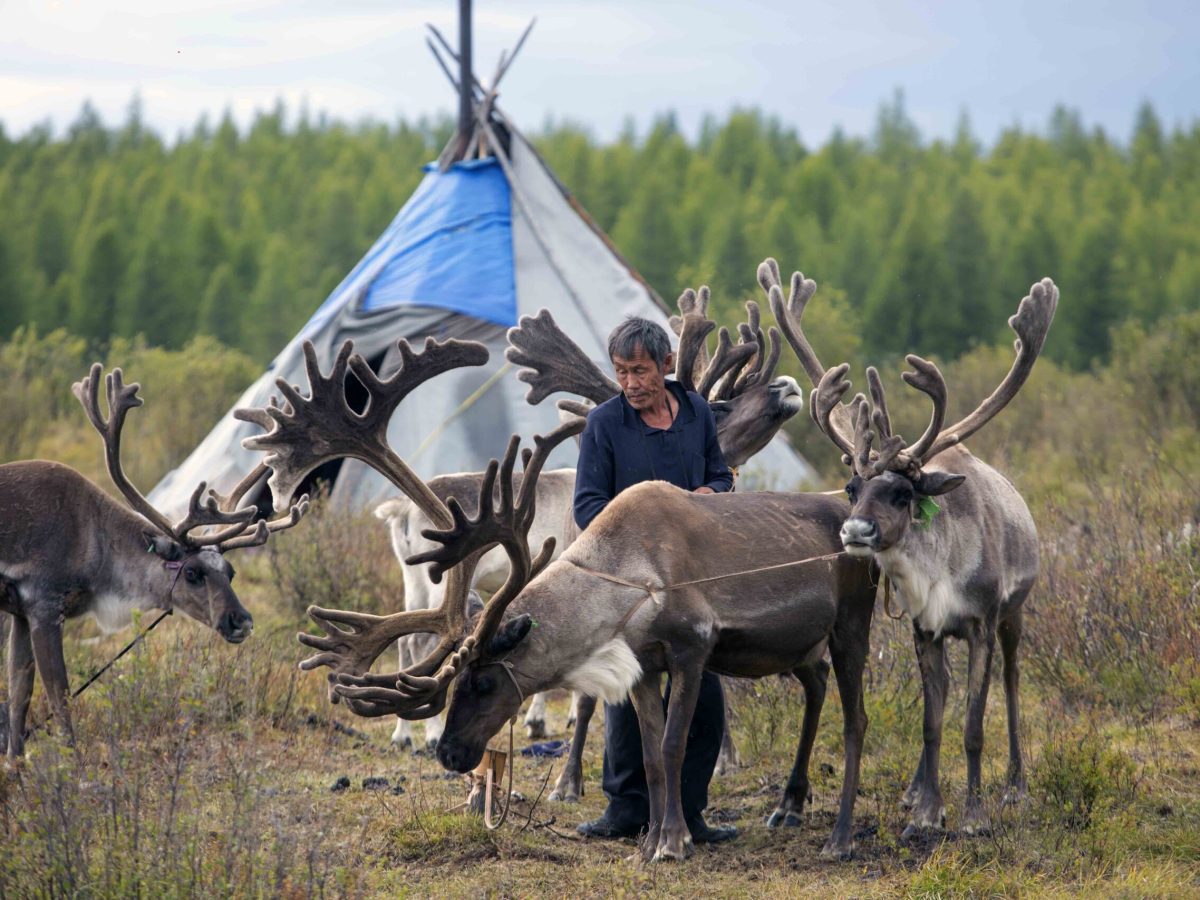
Geographically, the terrain of the Northern parts of Mongolia mainly consists of tectonically formed mountain chains. The entire region is prone to earthquakes. However, their effects are minimal from the low population density.
From the mountain chains in North Mongolia, the Khoridol Saridag mountain chain is located in the high northern corner of the area. These chains create the beautiful Darkhad Depression and the second biggest lake of Mongolia, Khuvsgul Lake. The mountains reach an elevation of more than 3000 meters (9,800 ft).
The second chain of the Northern parts is the Khentii Mountain range. It extends northeast from near Ulaanbaatar city, the capital of Mongolia, to the border with Russia. This range is related to the Siberian south frontier. With lush green vegetation and larch pine tree mountains, Khentii Mountains is more than 2,700 meters (9,000 ft) in elevation.
Northern Mongolia’s drainage pattern consists predominantly of two river systems: Orkhon and Selenge. The Orkhon, 1,130 km (700 miles) in length, is considered Mongolia’s longest river. It flows mainly northward, joining the Selenge river just before the Russian border.
The Selenge river drains northwest-central Mongolia before flowing northward to Russia and into Lake Baikal. The third-longest river, Kherlen, also flows in the area from Khentii Mountains across eastern Mongolia and into Dalai Nuur Lake or Hulun Nuur Lake.
The waters are rich with various fishes, such as Taimen, Sharp-Snouted Lenok, Brown Trout, Amur Pike, Khuvsgul Grayling.
The climate in northern Mongolia is quite diverse. The high elevation of the region affects the local climate, making it cold and semi-dry. Therefore, the whole area has an extreme continental climate with long, cold winters and short warm summers, during which most precipitation falls. Winter nights can drop to −40 °C (−40.0 °F). Summer days can reach +30°C (86 °F) in most years. The precipitation is highest in North Mongolia.
The mountainous region here in North Mongolia offers beautiful wildlife such as snow leopard, Siberian ibex, mountain sheep Argali, Red deer, grey wolves and palace’s cat, etc.
For domestic animals, locals tend to have more Yaks, sheep and goat compared to other regions. The Darkhad area of the north also boasts Darkhad white horses.
Darkhad, Tuva, Khotgoid, Buriad, Khalkh and other ethnic groups live in this region.